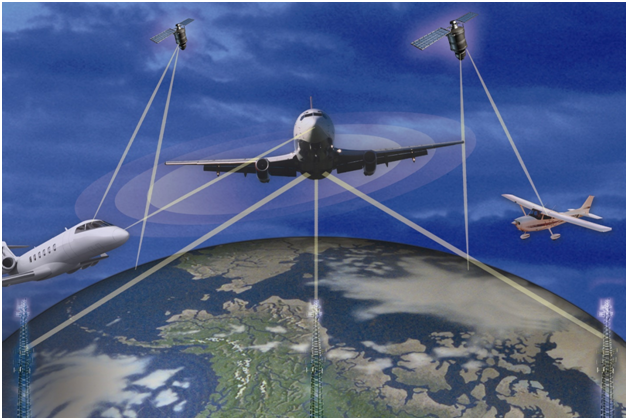Automatic Dependent Surveillance broadcasts are monitoring systems that help an aircraft navigate safely. It comprises several components such as receivers, antennas, transducers, and others. The rising development of cost-effective, small, and lightweight surveillance systems for unmanned aerial vehicles are likely to boost the product’s sales. It provides excellent navigation and boosts the aircraft’s performance. These factors are likely to boost industry development in the upcoming years.
Based on components, the industry is divided into transponder, receiver, antenna, and ground receivers. The industry is divided into four categories based on the platform: commercial aviation, business jets, unmanned aerial vehicles (UAV), and helicopters. The industry is separated into two types of operations: ADS-B In and ADS-B Out. The industry is divided into three categories based on application: ATC surveillance, aerial surveillance, ground surveillance, and others.
Development of Innovative Surveillance Systems by Major Companies to Consolidate Business
Thales Group, Garmin Ltd, Honeywell International Inc., Collins Aerospace, and others are actively developing automatic aircraft monitoring systems, which, in turn, shall boost competition in the automatic dependent surveillance-broadcast industry. Aireon and Avinor Air Navigation Services entered into an agreement in February 2021 to install space-based ADS-B to monitor helicopter activities in the Bodo Oceanic Flight Information Region.
The global Automatic Dependent Surveillance-Broadcast (ADS-B) Industry size is expected to reach USD 2,877.5 million by 2028 from USD 901.7 million in 2021, exhibiting a CAGR of 18.03% during the forecast period. The growing development of lightweight, small, and cost-effective automatic surveillance-broadcast transceivers for unmanned aerial vehicles will have a tremendous impact on the automatic dependent surveillance-broadcast industry growth in the forthcoming years. In its research analysis, titled “Automatic Dependent Surveillance-Broadcast (ADS-B) Industry, 2021-2028.” The industry size stood at USD 847.9 million in 2020.
The COVID-19 epidemic has had a significant influence on the aviation sector. The automatic dependent surveillance-broadcast industry has taken a beating as deliveries of all aircraft types have plummeted. Weak aircraft orders, a slowing economy, and delayed commercial aircraft deliveries contributed to the industry’s downward trend.
According to the International Air Transport Association (IATA), international passenger demand declined 75.6 percent in 2020, while domestic passenger demand plummeted 48.8 percent. Similarly, according to the International Civil Aviation Organization (ICAO) 2020 research analysis, total air passenger numbers decreased by 60% (2,699 million) from 4499 million in 2019, resulting in a loss of USD 371 billion for airlines.
Worldwide Industry Companies in 2022
The Research analysis Lists the Key Players in the ADS-B Industry include Aspen Avionics, Inc. (U.S.), Avidyne Corporation (U.S.), Collins Aerospace (U.S.), FreeFlight Systems (U.S.), Garmin Ltd. (Switzerland), Honeywell International, Inc. (U.S.), Indra Sistemas S.A. (Spain), L3Harris Technologies, Inc. (U.S.), Southwest Antennas, Inc. (U.S.), Thales Group (France), Trig Avionics Limited (U.K.).
The research analysis on the automatic dependent surveillance-broadcast industry encompasses:
- Wide-ranging analysis of all the segments
- Valued data and figures on every region
- Latest industry trends and drivers
- Superior insights into all emerging developments
- COVID-19 Impact
Expansion of Airports to Incite Business Development
The growing demand for unmanned aerial vehicles (UAV) propels the industry growth. An increase in air passenger travelers has resulted in high demand for commercial aircraft, which, in turn, will aid the expansion of the automatic dependent surveillance-broadcast industry. Moreover, the development of new airports, especially in Asia Pacific, will spur opportunities for the industry. Five international airports opened in Vietnam, Israel, China, Turkey, and the U.S. in 2019. Furthermore, the Indian government announced to build 100 airports by 2024 and allocated USD 23.7 billion in the financial year 2020-2021. Thus, increasing spending in the aviation sector across the globe boosts the Automatic Dependent Surveillance broadcast industry growth.
Rising Urbanization to Augment Growth in North America
In 2020, North America led the Automatic Dependent Surveillance industry share worth USD 295.5 million. North America’s supremacy is attributed to the existence of several airports, a thriving aviation sector, and the greatest number of air travelers. Furthermore, from January 1, 2020, all aircraft flying in the United States must be outfitted with the aircraft surveillance system, according to the FAA.
In Asia Pacific, with expanding air traffic, passenger aircraft deliveries, and the presence of several airports, the industry will increase at the fastest rate. According to IATA, China will overtake the U.S. as the world’s largest aviation passenger industry by 2024. China constructs eight airports every year. In addition, fast growth of the aviation industry and rising urbanization in China, India, South Korea, and other Asian countries is expected to propel industry progress.
Worldwide Key Development
February 2020: Aireon forged a strong ten-year agreement with EUROCONTROL to offer space-based automatic dependent surveillance-broadcast data. It will facilitate EUROCONTROL to offer enhanced predictability in the European air traffic management network.





































